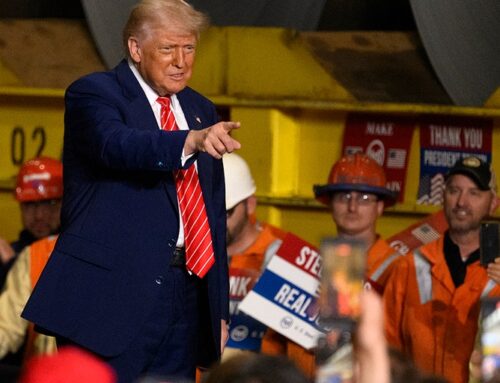How To Invest in Nuclear Energy. What You Need to Know
June 14, 2025
Nuclear energy is experiencing its biggest revival in decades, and investors are noticing, sending shares in related stocks and exchange-traded funds (ETFs) higher. The sector is poised to generate a record level of electricity in 2025, while global investment in nuclear power has increased rapidly over the past four years, with a compound annual growth rate of 14%. That’s up from 1% prior to 2020.
The surge is less about meeting climate goals with low-carbon energy sources than about the massive power demands of AI and data centers as the global economy undergoes seismic shifts.
Key Takeaways
- There has been unprecedented growth in nuclear energy in the mid-2020s, driven by the increasing power demands of AI data centers and supportive government policies.
- Investors can access nuclear exposure through uranium miners, such as Cameco Corporation (CCJ), utilities like Constellation Energy Corporation (CEG), or diversified ETFs like the Global X Uranium ETF (URA).
- Small modular reactors (SMRs) represent the next generation of nuclear technology, with companies like NuScale Power Corporation (SMR) and Oklo Inc. (OKLO) leading the development.
The Nuclear Energy Market’s Critical Mass
The nuclear renaissance isn’t happening in a vacuum. Data centers consumed about 4.4% of total U.S. electricity in 2023, a figure that’s expected to grow to about 12% by 2028. That expected increase is driven by the growth in AI, which requires enormous amounts of reliable, 24/7 power.
Major tech companies are responding by signing nuclear power purchase agreements. Meta Platforms, Inc.’s (META) recent deal with Constellation Energy for an Illinois nuclear plant follows similar moves by Amazon.com Inc. (AMZN), Alphabet Inc. (GOOGL), and Microsoft Corporation (MSFT). (For price and fundamentals on any shares listed on this page, click on their market page.)
These aren’t feel-good sustainability gestures, but strategic moves in the AI race. “Securing clean, reliable energy is necessary to continue advancing our AI ambitions,” said Urvi Parekh, head of global energy at Meta, in a press release.
Important
The policy environment has shifted dramatically in favor of more nuclear energy. President Trump has signed executive orders to support the industry, including more uranium production and enrichment in the U.S.
Core Holdings in Nuclear Energy
Nuclear Stocks
Cameco: The world’s second-largest uranium producer offers the most direct exposure to gains from nuclear fuel supplies. In May 2025, Goldman Sachs Group Inc. (GS) rated Cameco as a “buy” with a price target of $65, suggesting an 11% upside. Beyond uranium mining, the company owns a 49% stake in Westinghouse, giving investors exposure to reactor construction as well.
Constellation Energy: The largest owner of nuclear plants in the U.S. that are not rate-regulated. Unlike rate-regulated utilities, where state regulators control profits, Constellation can benefit more responsively from rising electricity prices and growing demand.
GE Vernova (GEV): As a spinoff from General Electric’s energy business, Vernova offers exposure to multiple energy technologies.
Nuclear ETFs for Diversified Exposure
Nuclear ETFs provide more diversification than single stocks:
Global X Uranium ETF (URA): With 51 holdings and $3.6 billion in assets under management, it provides ample exposure to uranium producers, nuclear component manufacturers, and service providers. Cameco is the fund’s largest position, accounting for about a quarter of its holdings.
Sprott Uranium Miners ETF (URNM): Focuses specifically on uranium mining companies, with 38 holdings and $1.7 billion in net assets. This fund targets companies dedicating at least 50% of their assets to uranium mining.
Related Stories
The Small Modular Reactor Revolution
Perhaps the biggest gains are to be found in small modular reactors (SMRs). Over 80 SMR designs are in development, with key competitors including NuScale, Rolls-Royce Holdings PLC (RYCEY), and Rosatom, the Russian state nuclear energy company that controls over 40% of the global uranium market and 17% of international reactor fuel. These smaller, factory-built reactors promise faster deployment and lower costs than traditional large nuclear plants.
- NuScale Power: The only company with SMRs certified by the U.S. Nuclear Regulatory Commission (NRC), giving it a significant first-mover advantage. The company says it expects NRC certification for its higher-output 77-megawatt reactors soon, which would make them cost-competitive with coal-fired plants.
- Oklo: Backed by OpenAI’s Sam Altman, the company said it plans to bring its first reactor online by 2027.
The Half-Life of Nuclear Investments
Nuclear investing isn’t without significant risks:
- Construction and development risk: Nuclear power plants have the highest construction risk among all energy infrastructure, with average cost overruns of 102.5%. This risk extends to SMR developers, most of whom still need to show they can build and operate their technologies economically.
- Highly concentrated supply chain: Uranium production is highly concentrated in four countries, with Kazakhstan accounting for 43%, and enrichment capacities are concentrated in only four suppliers.
- Political support: Nuclear projects are subject to extensive regulatory oversight and can be vulnerable to shifting political winds.
The Bottom Line
Nuclear energy investing provides exposure to a sector seeing vast changes resulting from the increasing energy demands for AI, evolving climate policies, and technological shifts. While traditional utilities like Constellation Energy provide stable exposure to existing nuclear assets, uranium miners like Cameco offer commodity-linked returns, and SMR developers like NuScale and Oklo are the go-to options for those seeking a higher risk-reward ratio.
Search
RECENT PRESS RELEASES
Related Post
:max_bytes(150000):strip_icc()/GettyImages-2215966935-2fdeaa4ee1f44189965fa96f5608f100.jpg)
:max_bytes(150000):strip_icc()/GettyImages-1190952905-8cb6e6c99e854f458b65b0f6bf7f0563.jpg)



